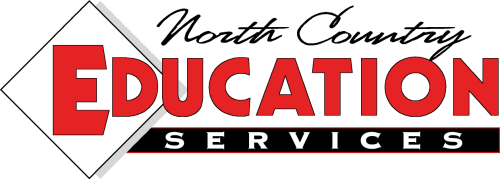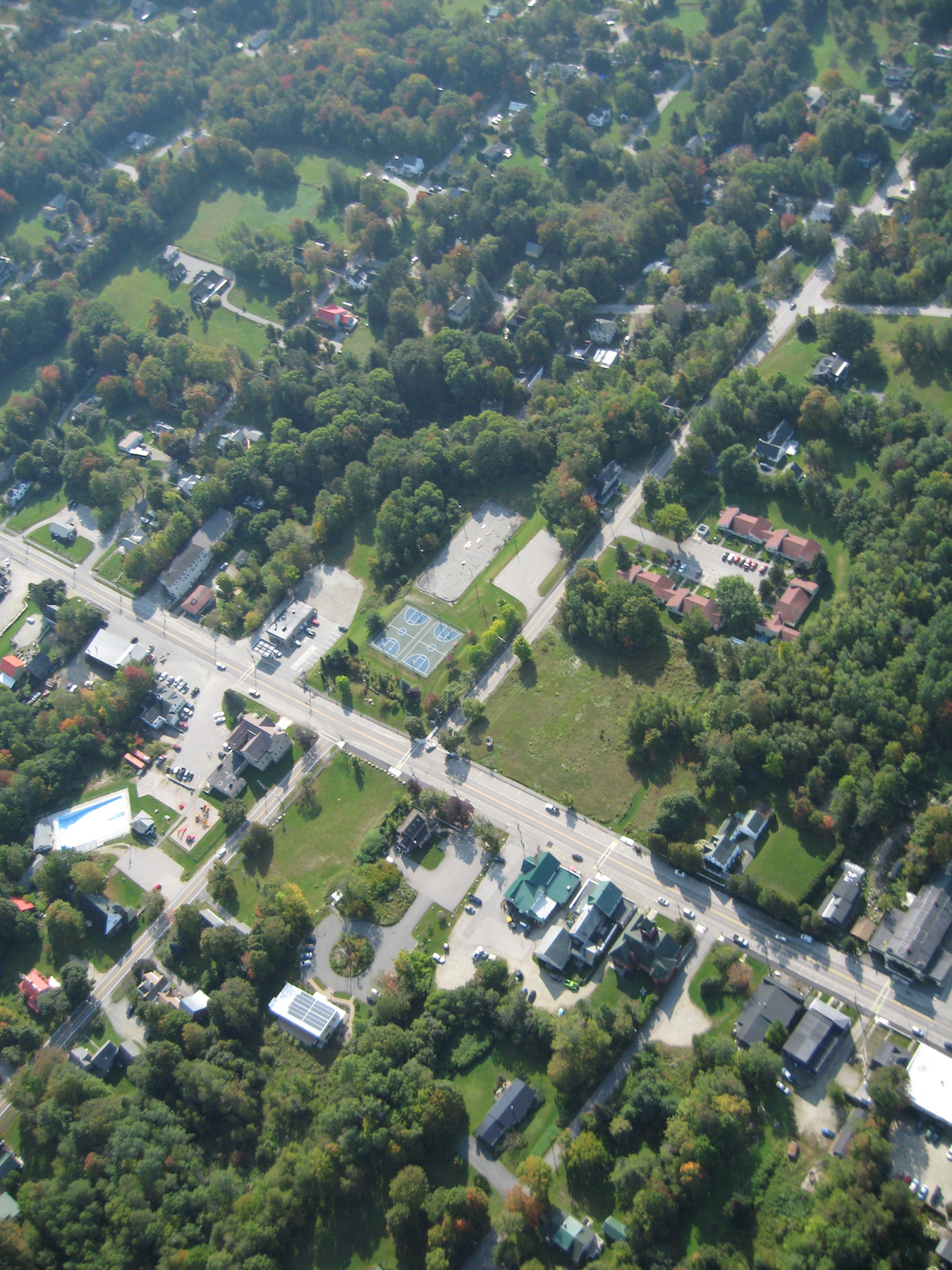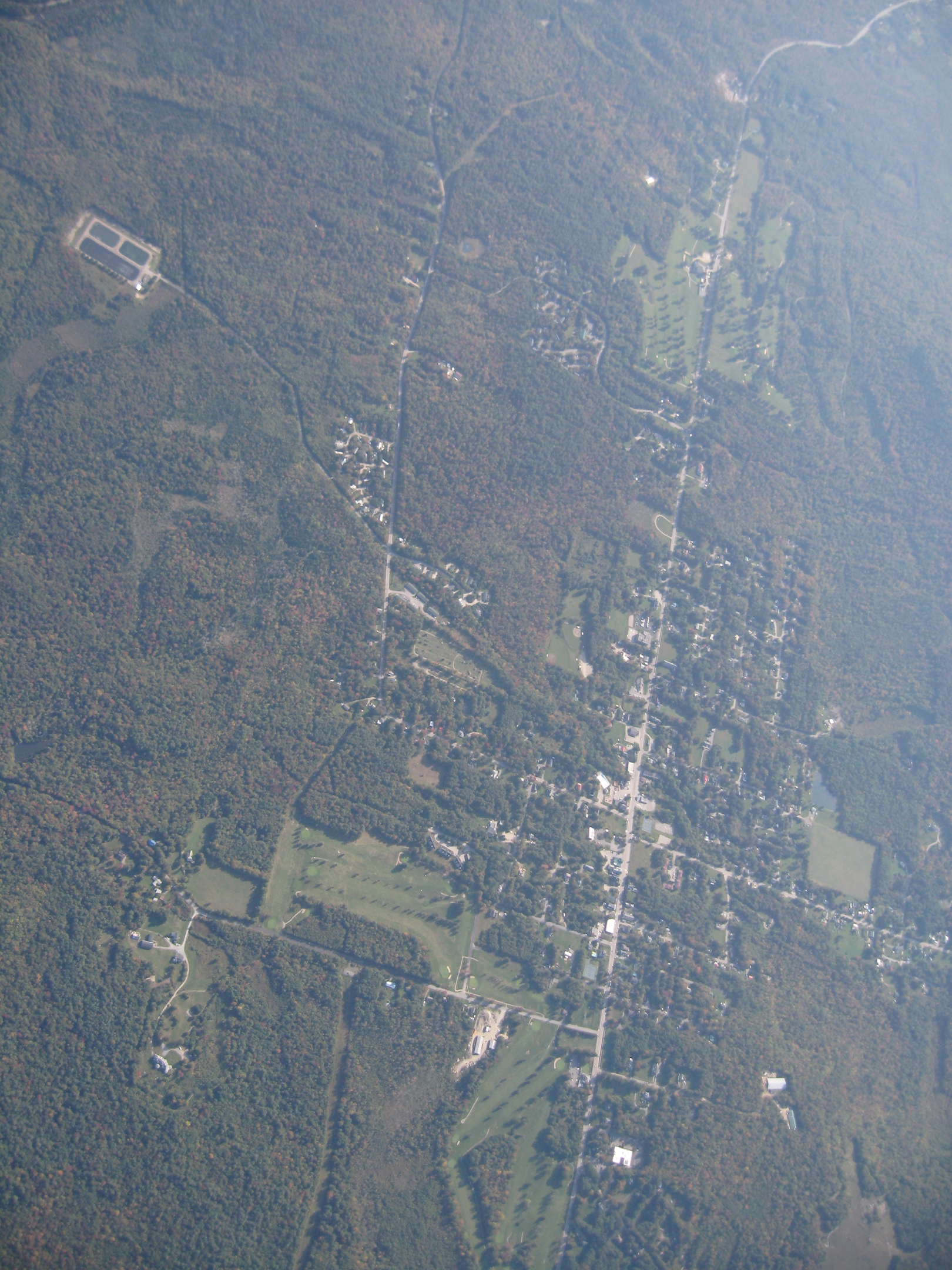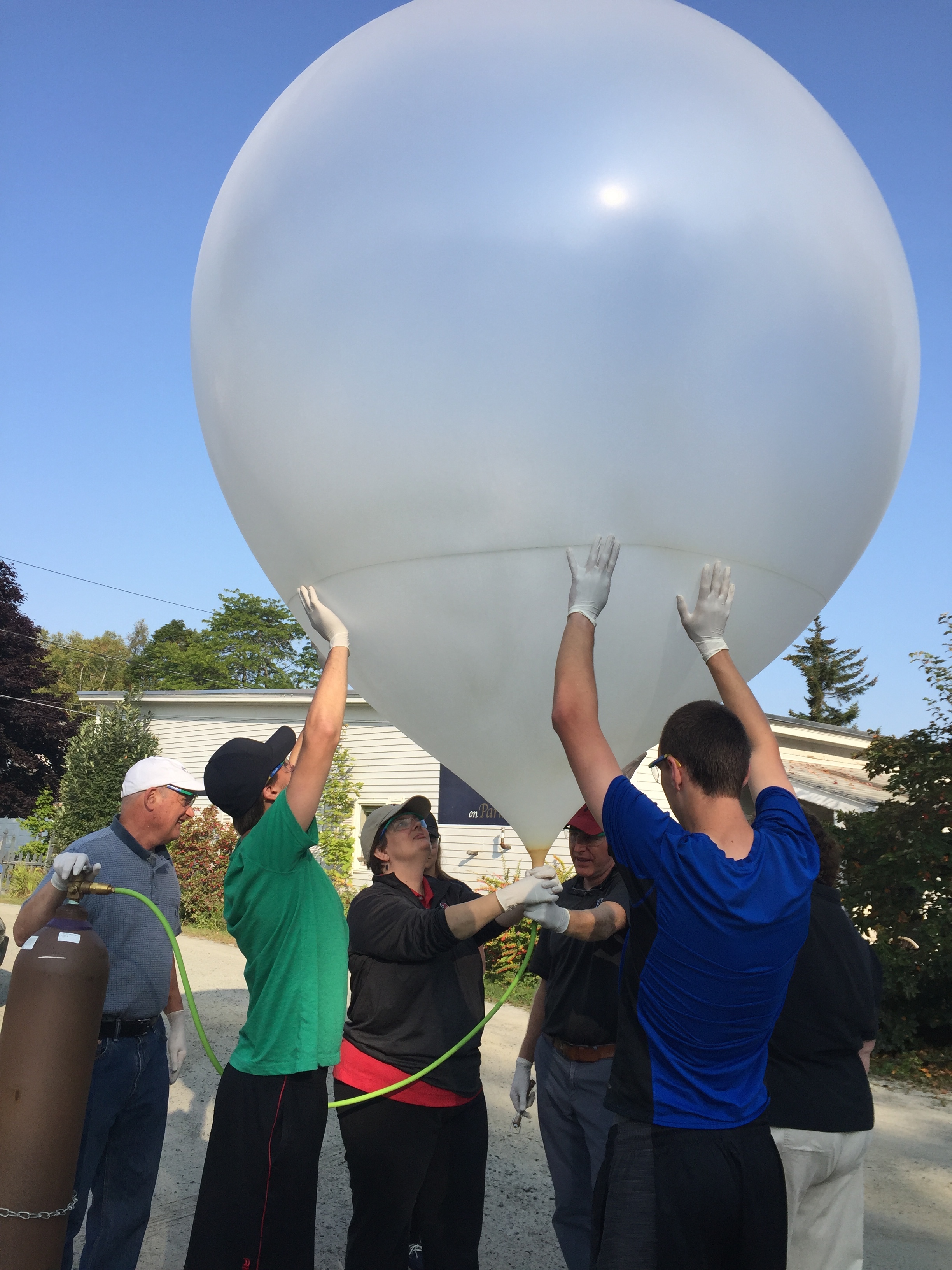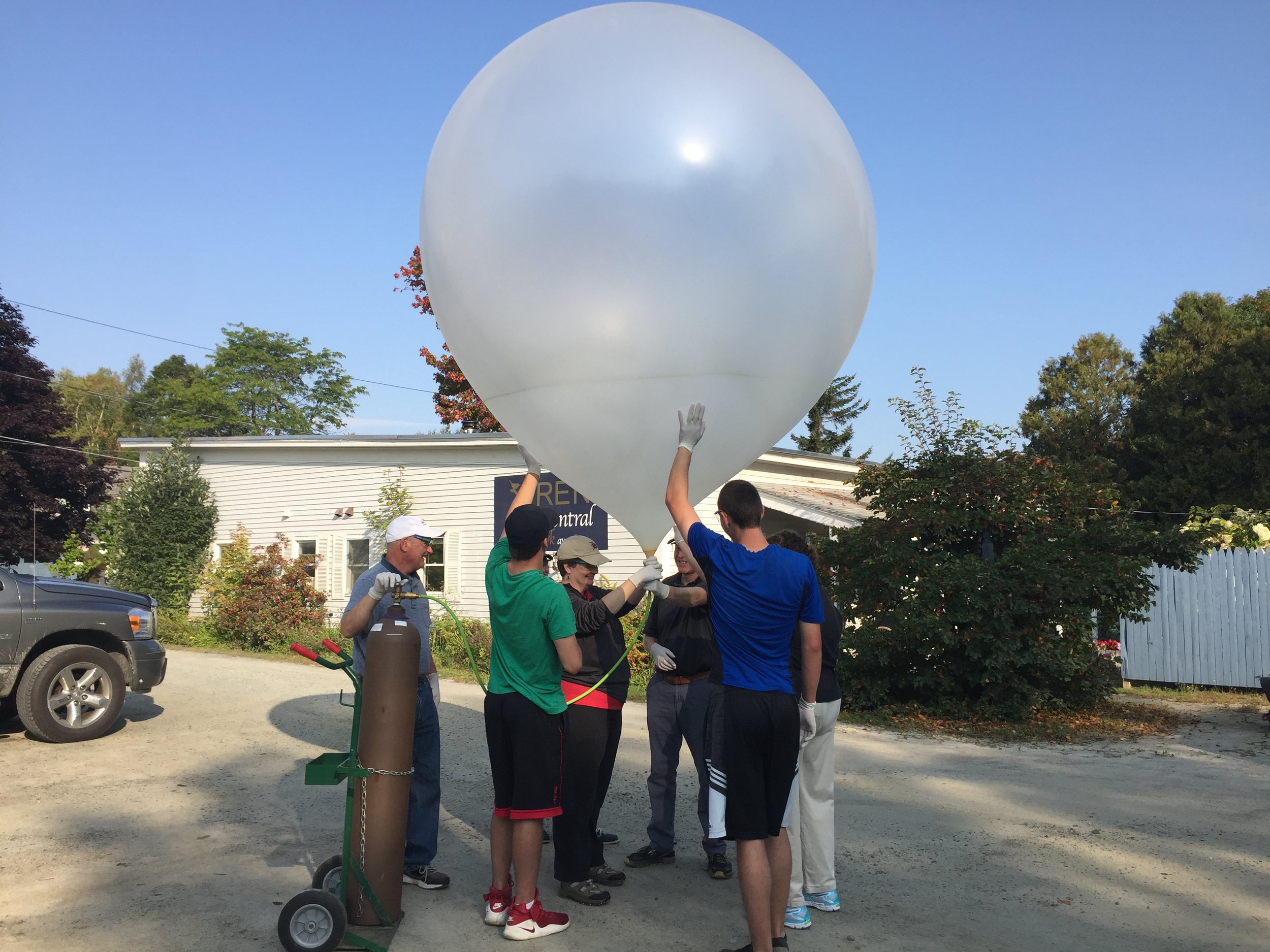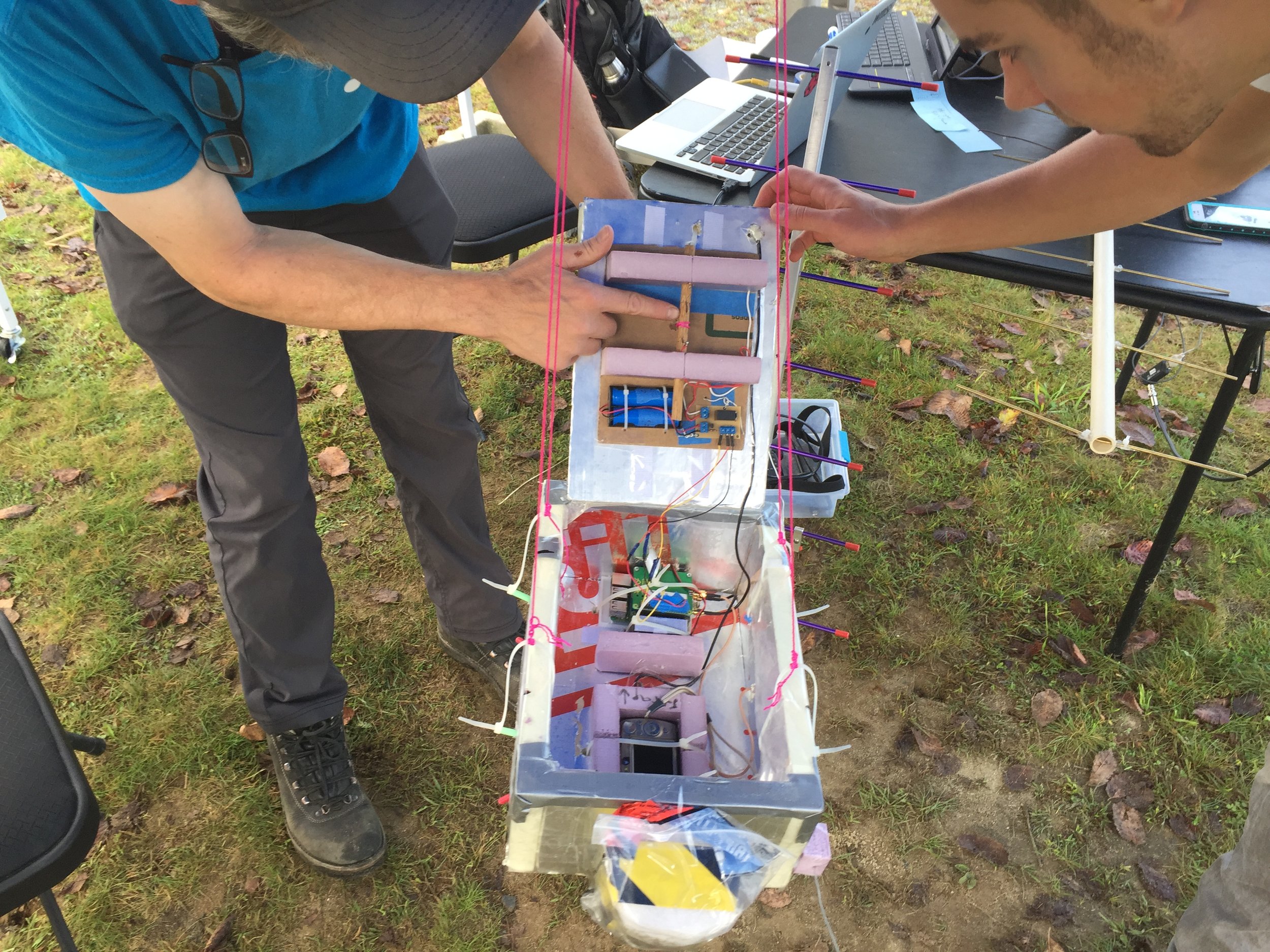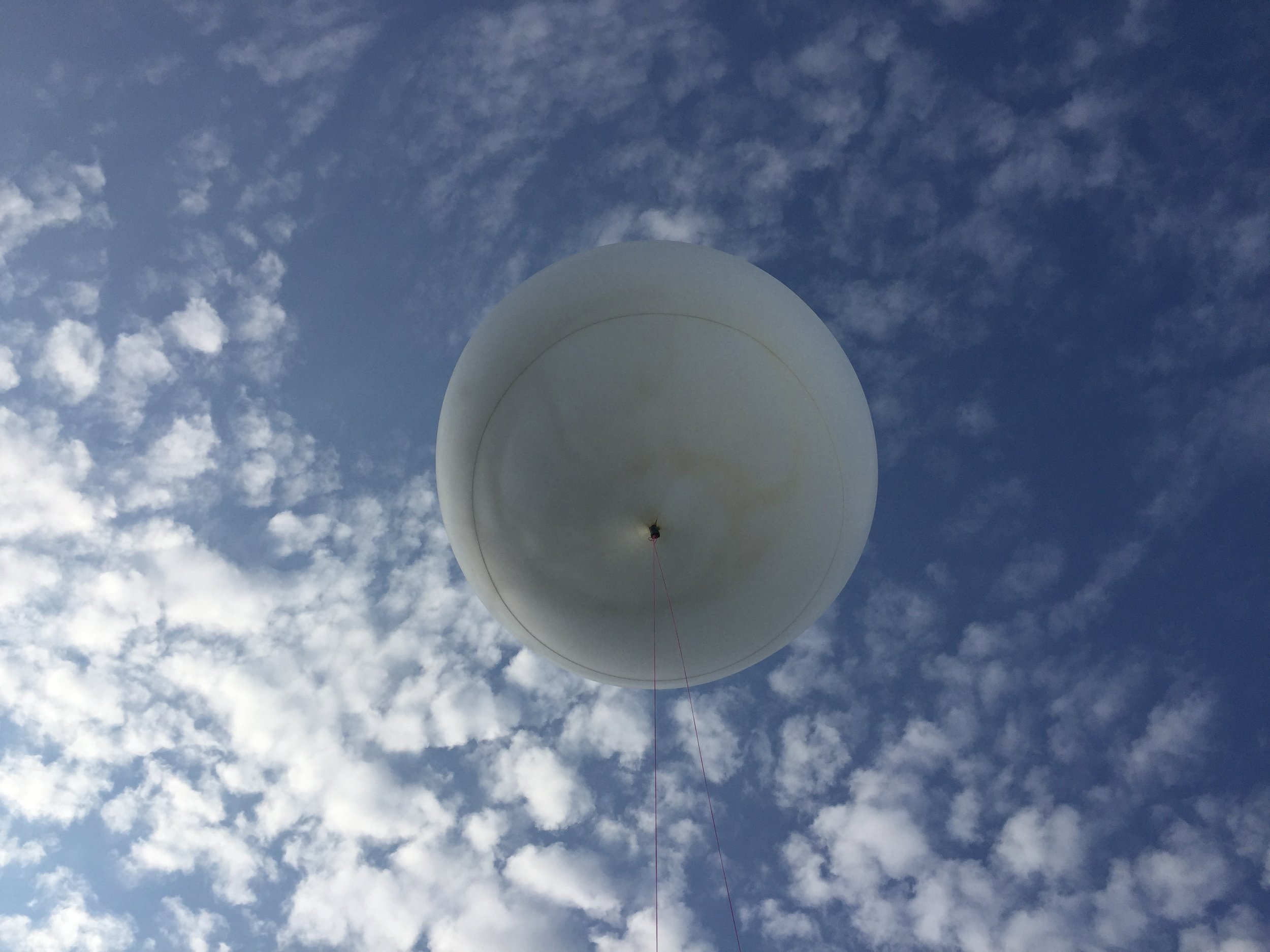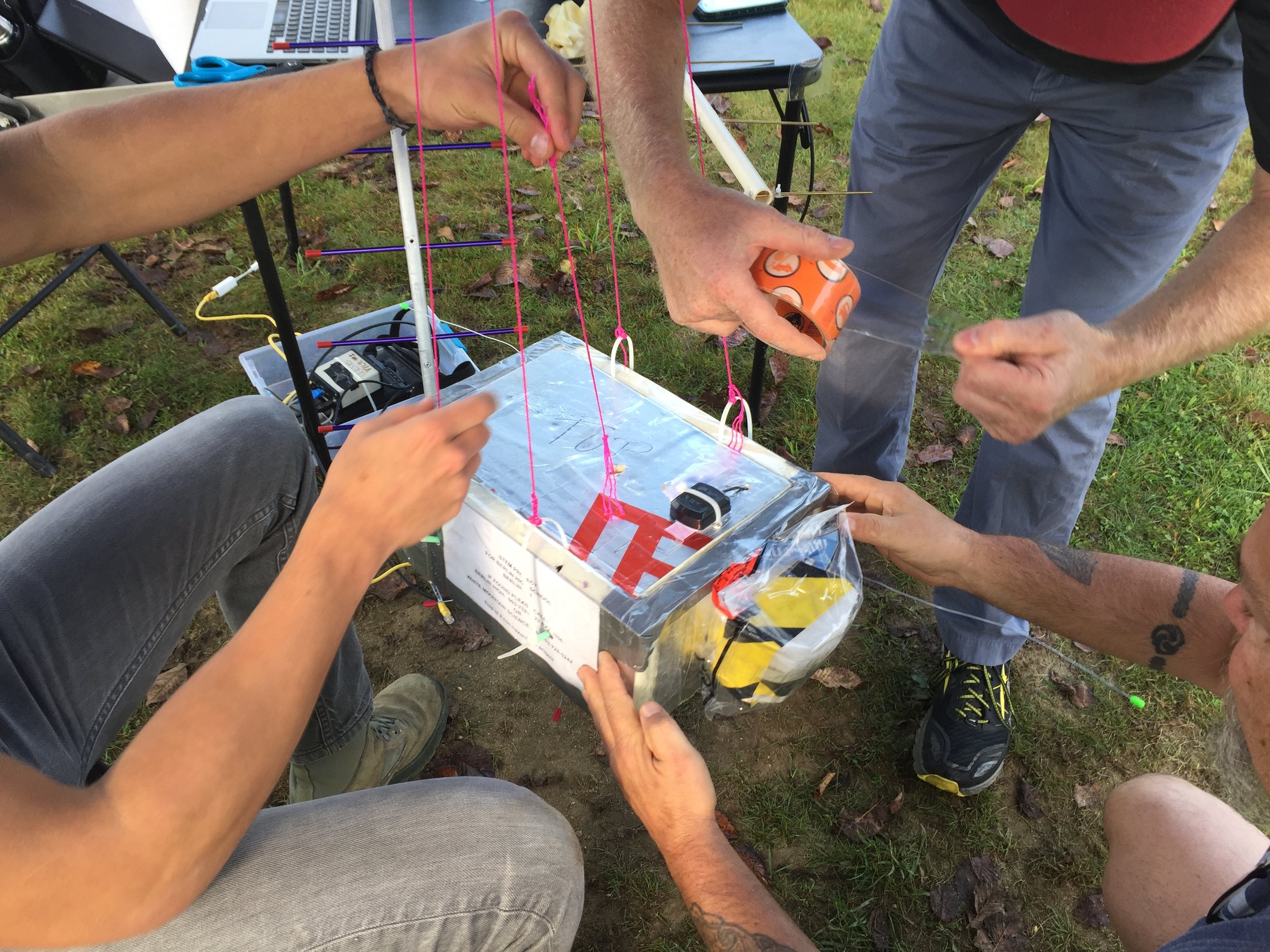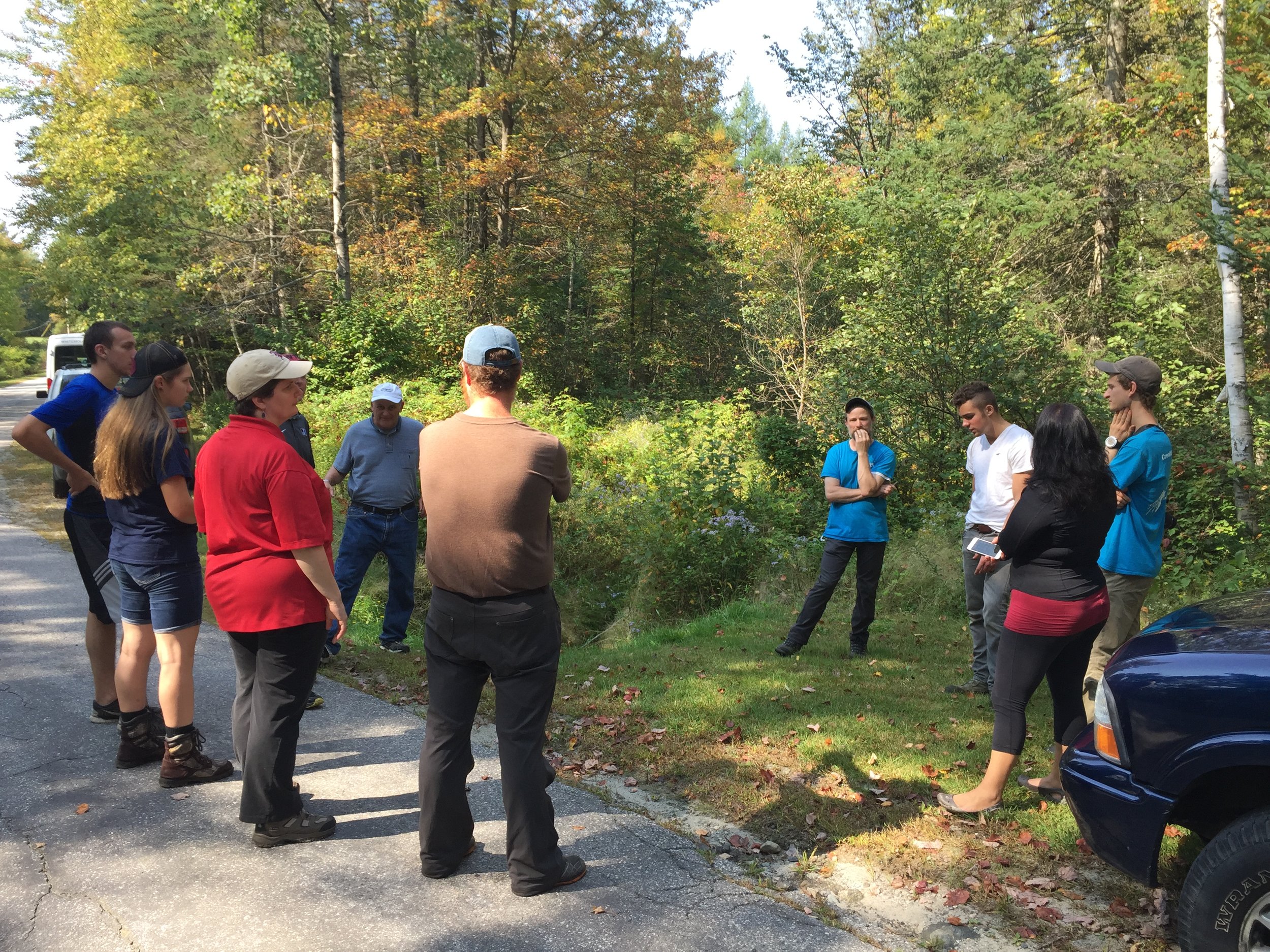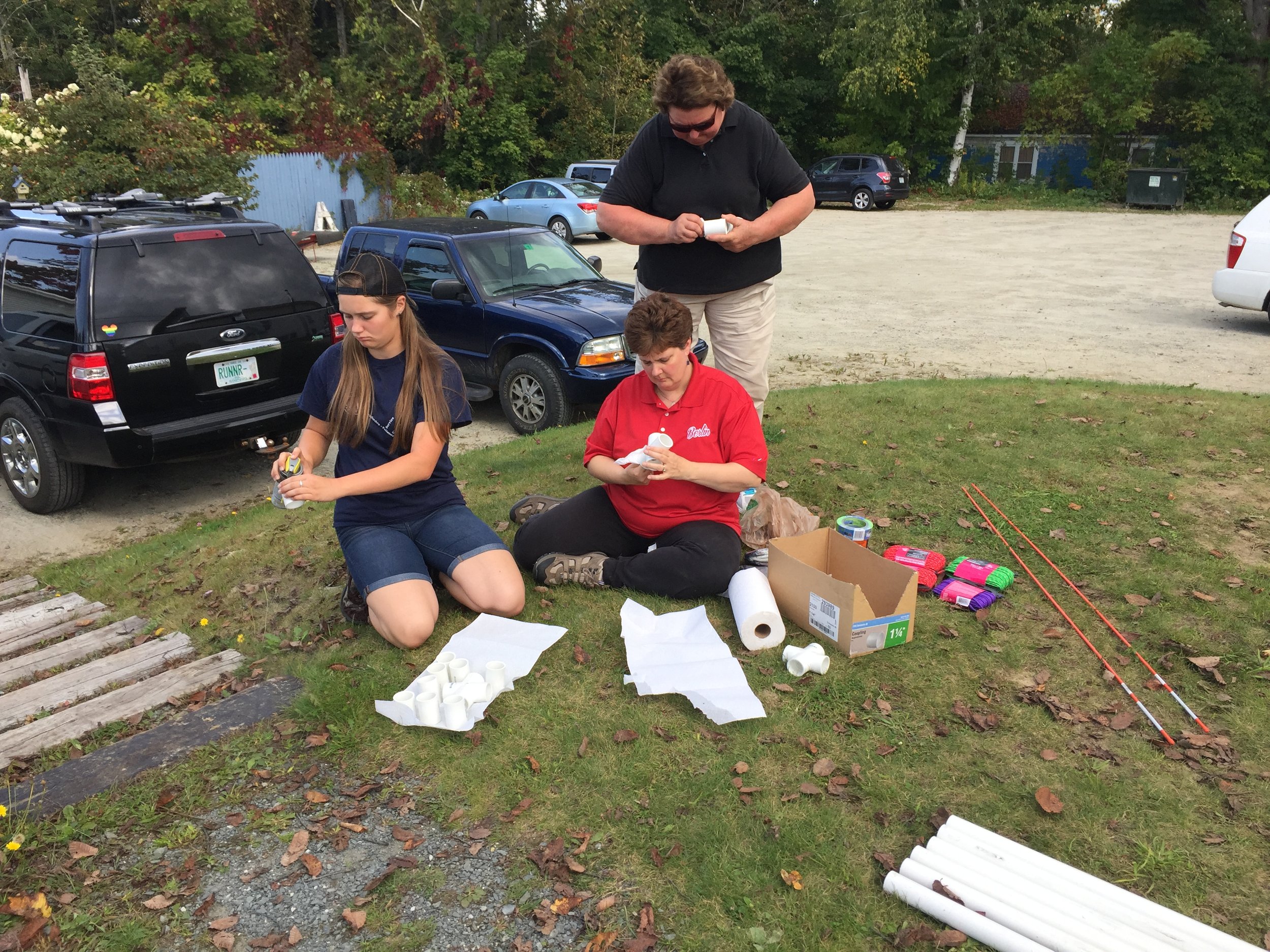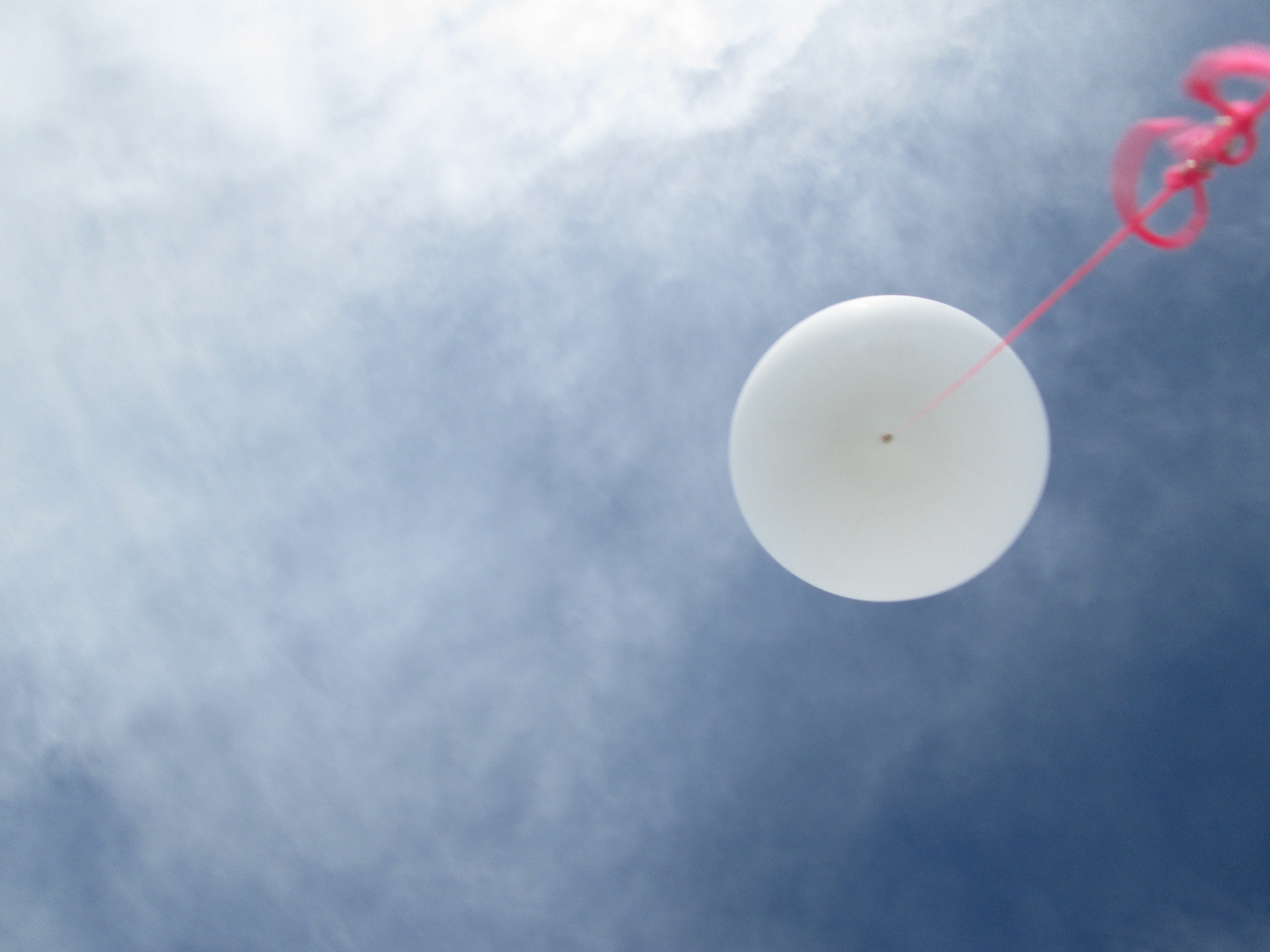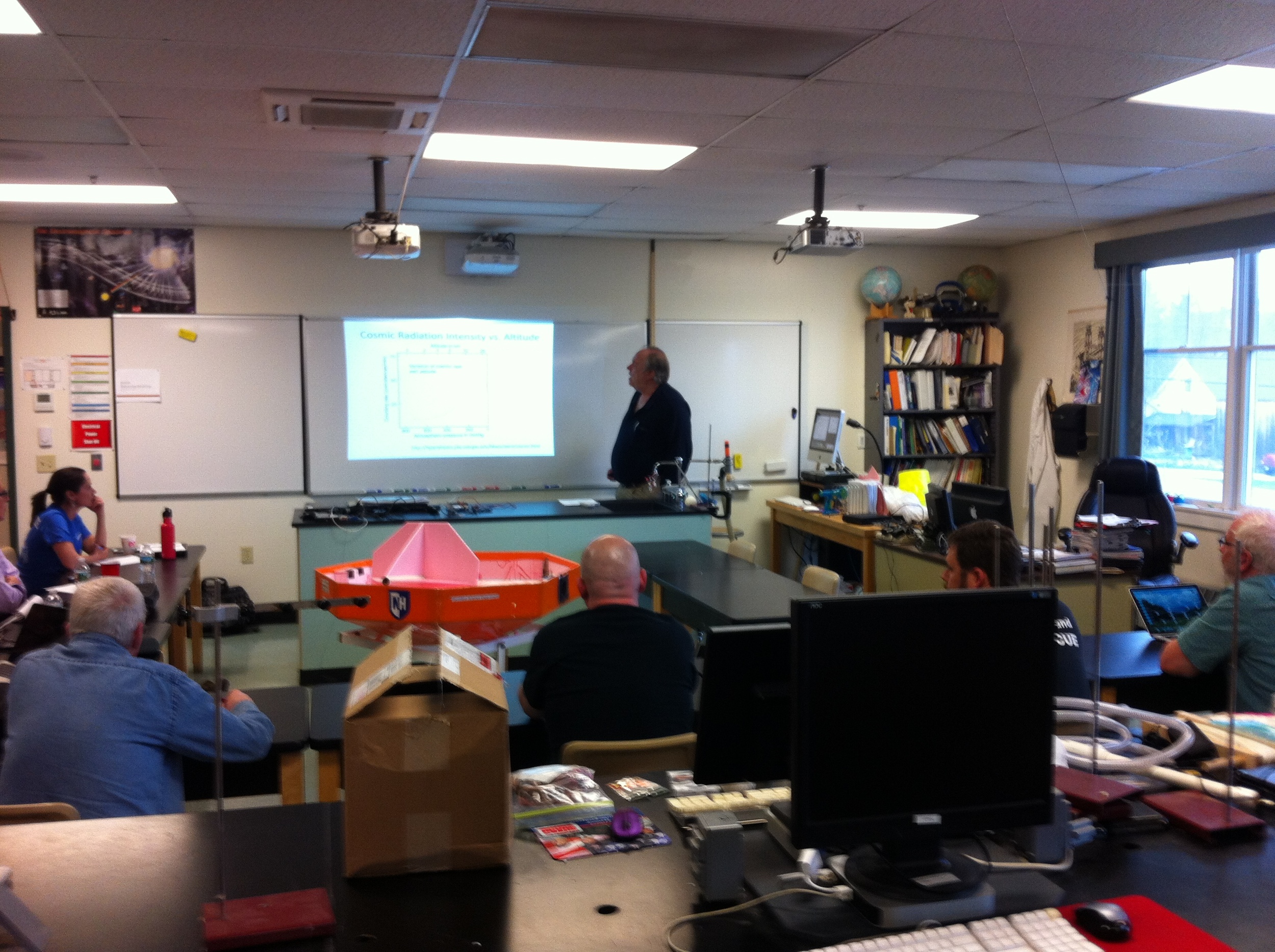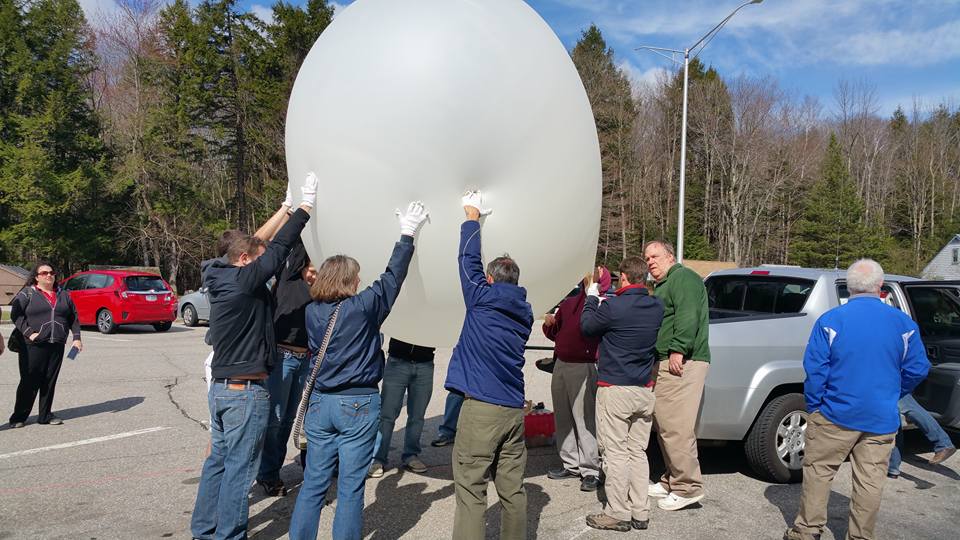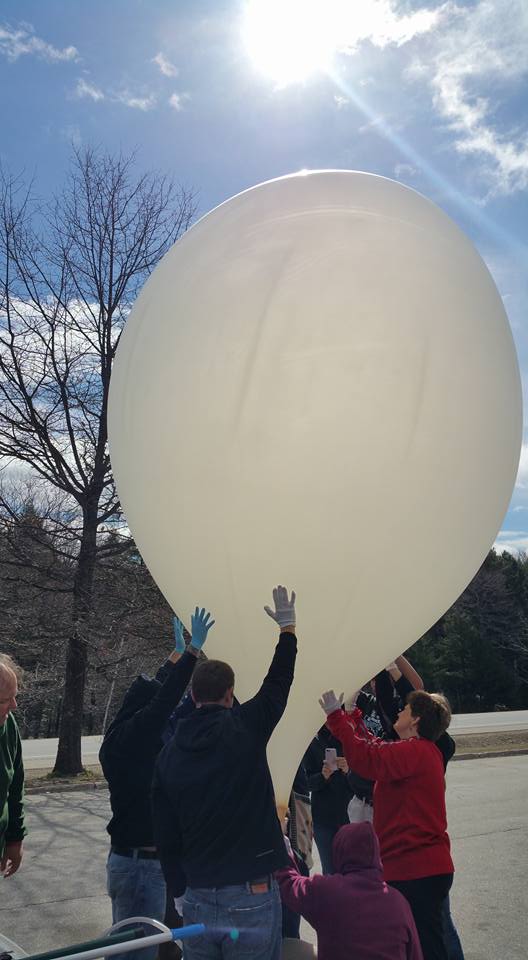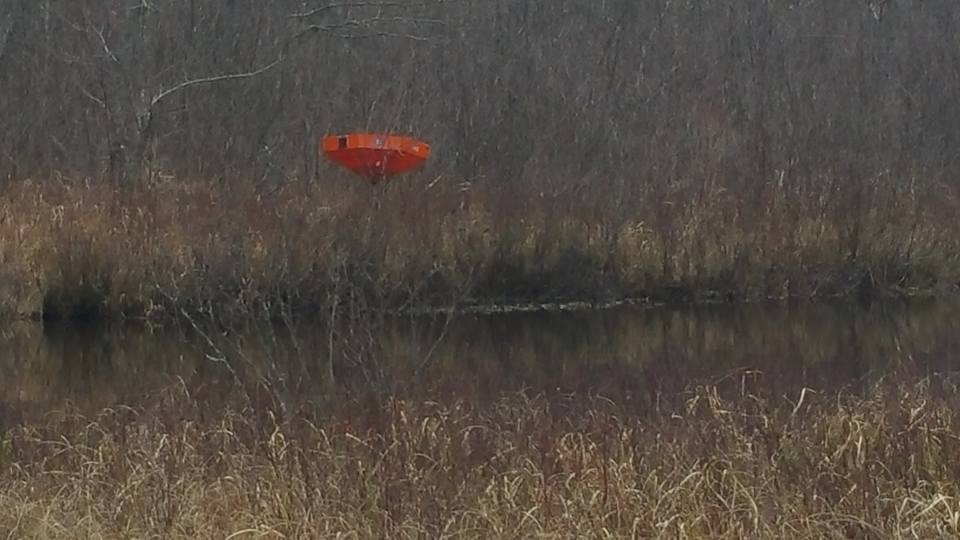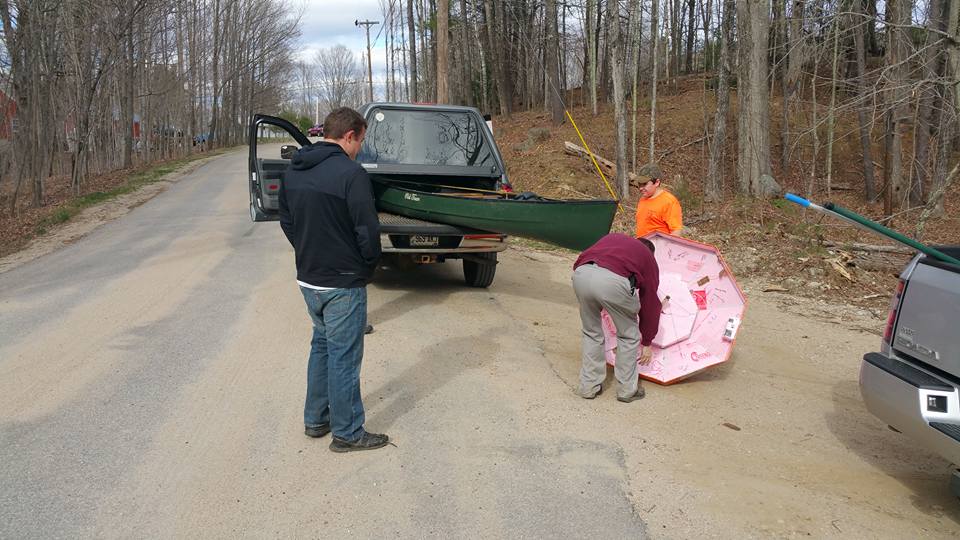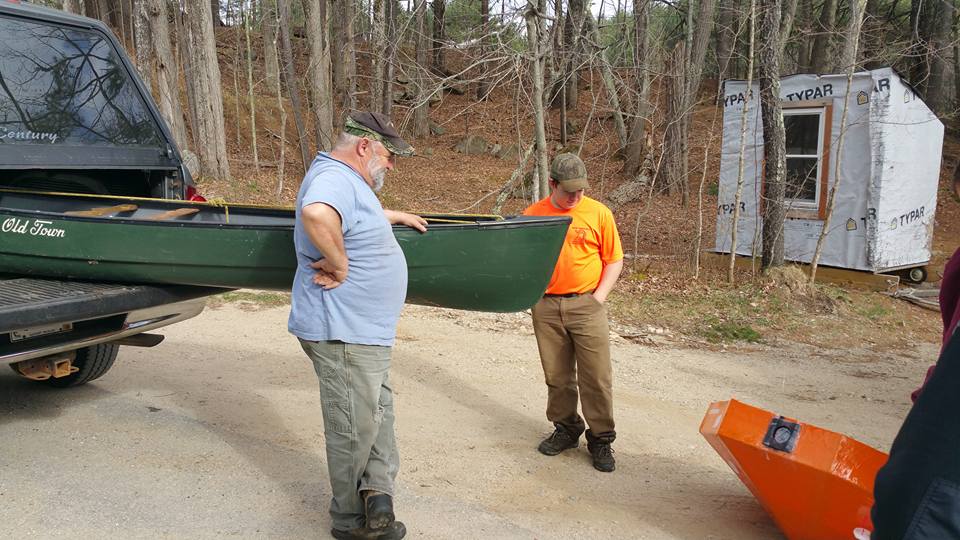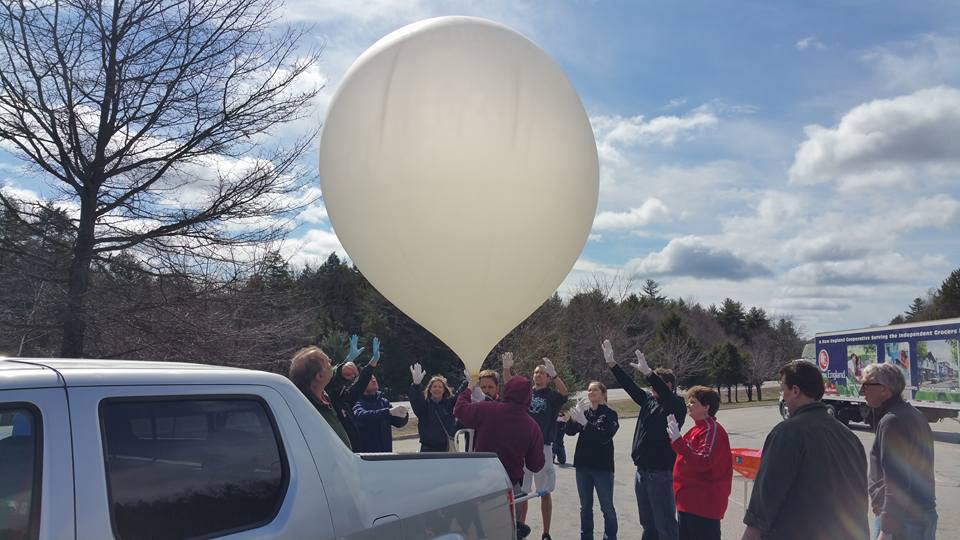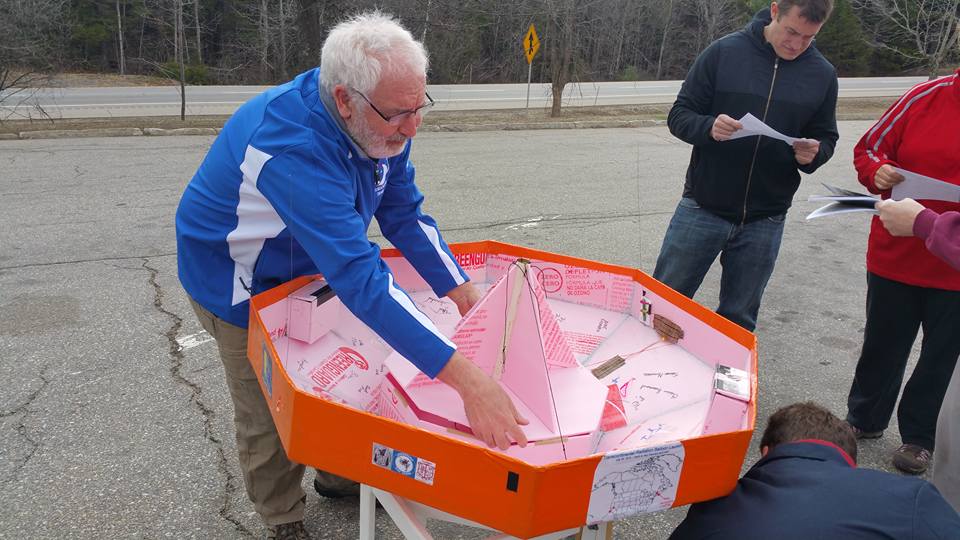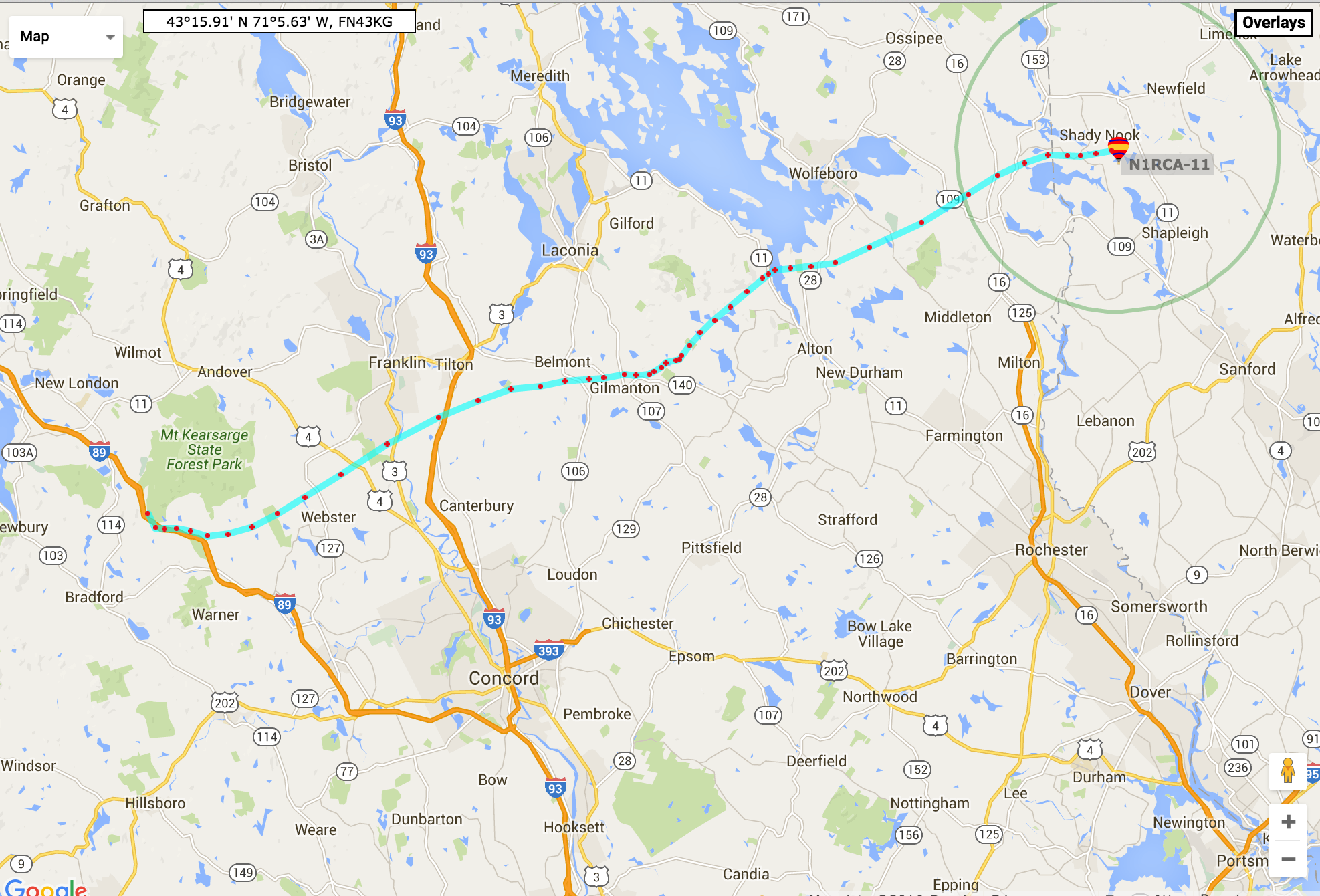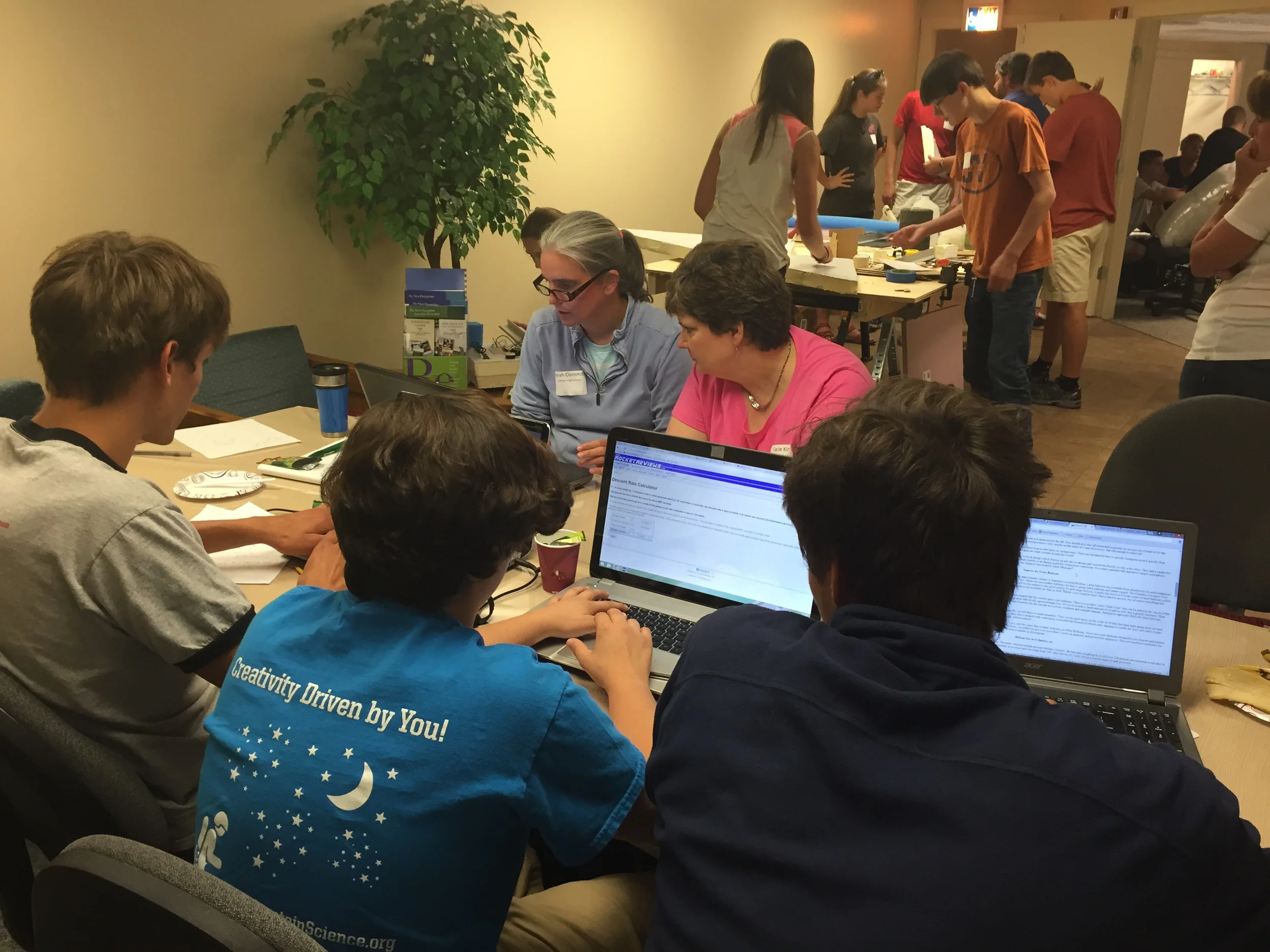Fall 2017 Launch and Recovery with Berlin High School
STEM Resource Partners Participate in NHSTA HABs Workshop
High Altitude Balloon Challenge - Design and planning phase, summer 2015
White Mountain Science Inc instructors Nick Sullo, Bill Church, and Steve Roberts.
Planning and designing for a high altitude balloon launch and recovery was what six educators and twelve high school students from throughout northern New Hampshire gathered for at North Country Education Services for three days this summer. The work was in preparation for a launch this fall when the shedding of the leaf canopy should increase the likelihood of finding the payload released from the balloon.
The project served as both professional development for teachers and hands-on STEM experience for students. Shortly after the participants arrived, they were assigned a task by the project facilitators from White Mountain Science, Inc. of Bethlehem. The task, working from a helium-filled balloon, plan and design how to launch and retrieve the balloon’s payload carrying instrumentation to collect data, including photos or video, from the edge of space.
Participants were divided into teams mixing schools, teachers, and students. Beyond the task itself, teams were given little information. This required the teams to dig into research on high altitude ballooning. From researching how others have gone about this task, to factoring in how weather and atmospheric conditions will impact the launch and recovery, to what the FAA requirements and regulations, the project was structured to give participants an authentic experience in tackling an engineering design task.
According to NCES Executive Director, Lori Langlois, the project is part of a larger grant funded professional development program that is engaging 40 educators from throughout northern NH on the integration of science, technology, engineering, and math – also known as STEM education. Langlois stated, “We are excited about this project for several reasons. There are so many challenges and factors to consider. There really is opportunity to specialize in an area that interests each person. For example, the teams discovered several websites that would predict where the balloon would land based on the date, time, and location it is launched from. One student looked at the open-source code from one of these sites and decided he could work out a program to do the reverse, select where they would like to recover the payload and then have the program generate a launch location that would likely yield that result. Low and behold, by the end of the next day, James Lemieux, a Gorham High School student, had worked out the programming. Other students dug into the physical building of the prototypes, you could see others who had an eye for the aesthetic design, and others who jumped into researching how others dealt with various aspects of the project. Once we get closer to the launch date this fall, one team of students will be involved with notifying the proper authorities. Others will be involved in documenting the project to be shared with others. You quickly see how an authentic project like this lends itself to developing a variety of skills.”
Langlois noted that part of the purpose of involving students from various high schools in the region was to help grow the expertise in what it takes to do remote data collection through high altitude ballooning. She said, “It would be fantastic to see schools begin to replicate this challenge and then be able to share data and experiences with each other. We are aware of students being involved in launches is two other locations in NH within the last few months. There is something really powerful about students seeing that something they designed can capture pictures of the Earth from the edge of space. We want to give more students the opportunity to be a part of excitement while developing a multitude of skills along the way”.
